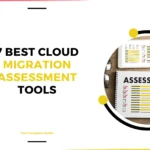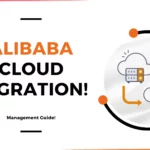For More Info!

Multi-Cloud Management: Tools, Challenges, and Best Practices
Navigating the complexities of multi-cloud management can be daunting.
This blog explores the challenges, best practices, and essential features of multi-cloud management platforms to help you make informed decisions.
Introduction to Multi-Cloud
Multi-cloud is reshaping the landscape of technology by offering solutions that mitigate vendor lock-in, reduce latency, and enhance cloud cost management.
Organizations can harness specialized capabilities from different cloud providers, whether it’s artificial intelligence, serverless computing, or augmented reality, to streamline and advance application development.
However, developing software based on multi-cloud architecture presents challenges. Each cloud provider and on-premises resource operates on different APIs and management interfaces.
For instance, Amazon S3 supports its API, whereas Azure Blob Storage and Google Cloud Storage do not. Managing these disparate interfaces adds complexity, development costs, and support overhead, underscoring the need for effective multi-cloud management solutions.
Benefits of Multi-Cloud Management
Multi-cloud management platforms empower organizations to optimize services across various cloud vendors.
They offer unified visibility into all cloud services, ensure continuous performance monitoring of deployed applications, and enhance data security measures.
Key benefits include:
- Avoiding Vendor Lock-in: Organizations can leverage diverse cloud services rather than relying solely on one provider, ensuring flexibility and access to cutting-edge solutions.
- Flexibility & Scalability: Multi-cloud environments facilitate seamless scaling of storage and processing capabilities based on fluctuating demands, enhancing operational agility.
- Risk Management: Multi-cloud setups provide resilience against infrastructure failures or security breaches by enabling quick switches between cloud providers or back to private clouds.
Challenges in Multi-Cloud Management
Despite its benefits, managing a multi-cloud environment comes with challenges:
- Cost Management: Optimizing expenses across multiple cloud services can be complex, leading to underutilization of resources and unnecessary costs.
- Performance Monitoring: Conducting regular performance checks in complex multi-cloud setups can strain development teams, impacting application reliability and user experience.
- Manual Processing Delays: Managing workloads across diverse platforms manually can result in delays in deployment and performance optimization.
- Cloud Sprawl: Unused cloud resources and instances left running can lead to sprawl, complicating resource management and increasing operational costs.
- Migration Complexity: Migrating applications and data across multiple clouds and legacy systems poses logistical and security challenges.
- Compliance and Security: Ensuring compliance with regulatory standards and maintaining robust data security protocols across multiple cloud environments requires meticulous planning and execution.
Best Practices for Multi-Cloud Management
Successful management of multi-cloud environments requires adherence to best practices:
- Architectural Mapping: Map out your network architecture to determine optimal cloud integration points and ensure alignment with business requirements.
- Standardized Consumption: Establish standardized practices for resource consumption across different cloud services to optimize costs and enhance efficiency.
- Integration Strategy: Implement robust integration frameworks to seamlessly manage and monitor the entire multi-cloud ecosystem, ensuring consistent performance and security.
- Containerization: Utilize containerization to enhance application portability and simplify management across diverse cloud environments.
- Disaster Recovery Planning: Develop comprehensive disaster recovery plans leveraging multi-cloud redundancy to safeguard critical data and applications.
- Security Measures: Implement stringent security measures, including role-based access controls and continuous monitoring, to safeguard sensitive data across all cloud environments.
Choosing the Right Multi-Cloud Management Platform
Selecting an effective multi-cloud management platform is critical. Key features to consider include:
- Service Provisioning: Automated provisioning of cloud services across multiple providers to streamline deployment processes.
- Service Monitoring: Comprehensive monitoring capabilities to track performance metrics and ensure optimal application performance.
- Service Governance: Policy-driven governance to enforce compliance and optimize resource utilization across multi-cloud environments.
- Service Orchestration: Seamless orchestration of services to support diverse application requirements and business processes.
- Integration with Security: Integration with existing security infrastructure to enforce data protection and regulatory compliance.
Top Multi-Cloud Management Platforms
Here are some leading platforms and tools for managing multi-cloud environments:
- Embotics (Snow Commander): Offers rapid setup and automated provisioning with customizable service catalogs across multiple clouds.
- Flexera (Cloud Management Platform): Provides unified visibility and orchestration of cloud services with automated disaster recovery and cost-saving features.
- HyperGrid (HyperCloud): Delivers intelligent cloud management with analytics-driven optimization and migration planning capabilities.
- Morpheus: Facilitates application-centric management with extensive automation and integration capabilities across hybrid cloud environments.
- Scalr: Supports role-based access controls and policy-driven management with integration capabilities for Terraform and other tools.




